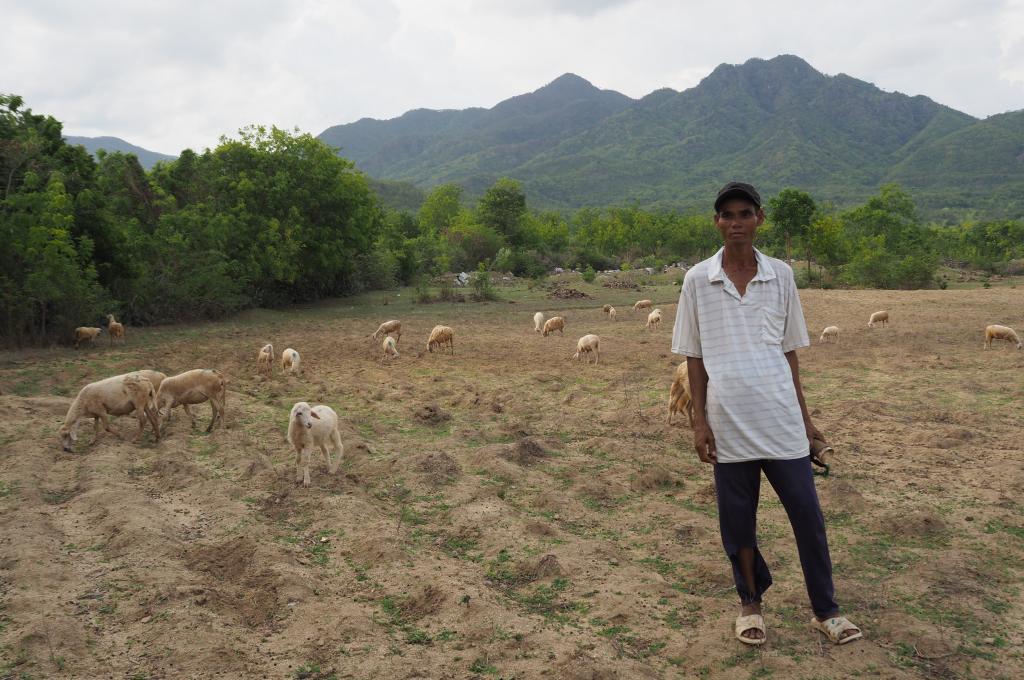SERVIR-Mekong Improves Drought Resilience in Vietnam

As the director of Ninh Thuan province’s Hydro Meteorology Station, Nguyen Sy Thoai has been dedicated to alleviating drought crises in Vietnam over the past few years. Ninh Thuan, a province in south central Vietnam with a population of just over 600,000, was one of the worst affected by drought and suffered a total loss of 768 billion VND (approximately $33 million) for lost crop and livestock production from 2014 to 2016. According to Thoai, farmers need more accurate short and long-term weather forecasts and rainfall predictions from the meteorology station to better forecast rainfall. Yet the provincial Hydro Meteorology Station currently relies on monitoring data from the local weather stations and general national data, which has proven insufficient.
Thoai was introduced to SERVIR-Mekong’s Regional Drought and Crop Yield Information System (RDCYIS) during a workshop on drought monitoring and forecasting in Ninh Thuan province on July 30, 2019. The workshop taught participants how to utilize accurate data from the system to prepare for future drought forecasts. Thoai was initially hesitant about the usefulness of the data. However, following a detailed demonstration of the RDCYIS, including the calibration and validation of the tool with ground-observed data received from Vietnamese agencies and an accurate forecast from the system of the recent drought period in central coastal region in Vietnam convinced him that the RDCYIS well-tested drought indices could greatly improve his ability to predict weather forecasts.
During the workshop, Thoai became a strong advocate for SERVIR-Mekong and its work on drought monitoring and forecasting.
“We would like to use the RDCYIS system to enhance our existing drought forecast, including the rain forecast information that can forecast up to 3 months ahead,” said Thoai. This information could help them provide more accurate forecast bulletins so farmers can plan their water consumption more effectively for agriculture and household usage.
He joined his peers from other provincial level agencies, including the Irrigation Management Company and the Provincial Department of Agriculture and Rural Development to encourage further application of the tool. Looking ahead, Thoai wants to sees the potential for co-developing this tool so it could provide more detailed information by geographic location, possibly crop yield forecasts for rice planting.
“I learned a lot from the meetings. The information being discussed is very helpful for improving our bulletin. We need to add a warning system and use symbols that are easy for community members to understand,” added Dang Thanh Binh, Deputy Director, Ninh Thuan Hydro Meteorology Station.
To make the tool available to water users at the community level among men and women farmers and others, SERVIR-Mekong is also collaborating with the Vietnam Women’s Union and their networks at the district level. For Tran Thi Hue, Head of the Women’s Union (WU) in Thuan Nam district, the workshop was especially eye opening. She said she learned a significant amount from the workshop about drought and will share this knowledge to others at WU to enhance their programs in support of local communities. This will be especially useful for villagers and farmers to adequately modify their crop planting to adapt for adverse weather conditions, plan for raising livestock and save enough water for consumption in their daily household chores.
Following this series of workshops, SERVIR-Mekong will continue close collaboration with VAWR and the Ninh Thuan agencies to gather feedback to improve the RDCYIS and develop a comprehensive guideline for the agencies to utilize the system to further enhance the forecasting and monitoring droughts. Once successful in Ninh Thuan, the service will be replicated in other provinces. With increased participation and adoption over time, it can help minimize the impacts of drought and creating more resiliency for crop production in local farming communities throughout Vietnam and beyond.



